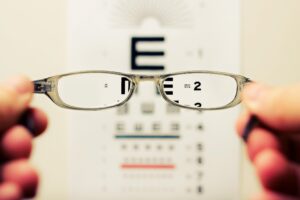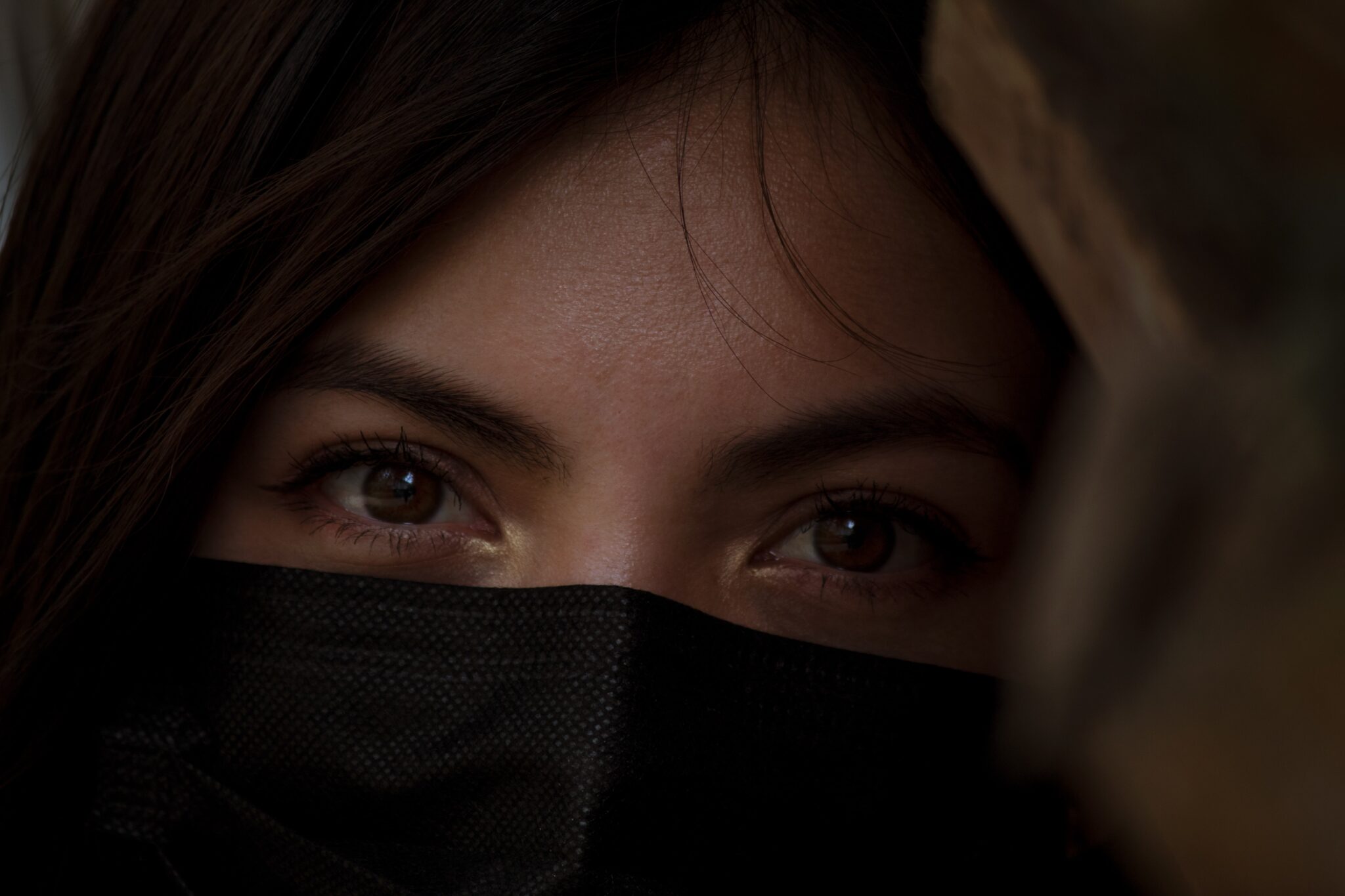
Reviewed by:
Nicole A. McCarthy, MD MSc

Reviewed by:
Nicole A. McCarthy, MD MSc


Glaucoma
By: Narda
December 17. 2021
Glaucoma is a group of eye conditions that refer to damage to the optic nerve caused by an abnormal, high pressure in the eye. A healthy optic nerve is essential for good vision, if it deteriorates, blind spots develop in the visual field and if not taken care of on time, the individual suffering this malady could lose eyesight. Glaucoma is treacherous, it does not announce itself until it is too late. That is why regular eye checkups are of paramount importance.
Glaucoma will occur when the eye produces too much of a fluid called aqueous humor which flows throughout the inside of your eye and drains out through a tissue called the trabecular meshwork at the point where the iris and cornea meet. If this drainage system does not work correctly and the fluid doesn’t flow out normally, it causes a buildup which increases the eye internal pressure.
Glaucoma raises its ugly head at any age, but it is more common among older adults, being one of the leading causes of blindness for people over the age of 60. It is estimated that about 15 percent of people affected with glaucoma could experience blindness in at least one eye within 20 years following diagnosis.
Some forms of glaucoma have no warning signs and their effects are gradual, making it hard to notice a change in vision until it is quite advanced, therefore, it is important to reiterate that vision loss due to glaucoma cannot be regained, which makes regular eye exams extremely important. These eye exams, will allow the ophthalmologist to detect and treat glaucoma in its early stages giving the physician an opportunity to slow it down.
NOTE: Intra-ocular pressure evaluations have to be made by an ophthalmologist or an ophthalmology-specialized nurse practitioner. Never by an optometrist.
Although nowadays, in addition to the eye drops therapy, there are laser treatments and surgery, in many cases, glaucoma means treatment for the rest of the person’s life. You may ask your doctor about the different options, and which one is the best for you and why.
Risk factors
Glaucoma is insidious and treacherous and could cause blindness before a person is even aware of its symptoms. Knowing the risk factors, could give an individual a decided advantage.
- Being over sixty years old
- Being Black, Asian or Hispanic
- Latinos with a significant degree of Native American ancestry
- Having a family history of glaucoma
- Suffering diabetes, heart disease, high blood pressure or sickle cell anemia
- Having corneas that are thin in the center
- Being extremely nearsighted or farsighted
- Having had an eye injury or certain types of eye surgery
- Genetics, glaucoma tends to run in families. Scientists have identified genes related to high eye pressure and optic nerve damage.
- Taking corticosteroid medications, especially eyedrops, for a long time
- Having high internal eye pressure (intraocular pressure)
- Being a woman. Research has found that the number of women suffering glaucoma is higher than that of men, an estimated 60:40 ratio
Symptoms
The signs and symptoms of glaucoma will vary depending on the type and stage of the condition, but in general you can expect one or more of the symptoms below:
- Intermittent blind spots in your peripheral or central vision, in one or both eyes
- Severe headache
- Eye pain
- Blurred vision
- Halos around lights
- Eye redness
- Nausea and vomiting
- Tunnel vision (in the advanced stages)
NOTE: You should schedule an urgent visit to your ophthalmologist or even visit the emergency room if you experience eye pain, severe headache, blurred vision, or a combination of these symptoms.
Types of glaucoma:
Open-angle glaucoma
This is the most common form of glaucoma. It happens when the drainage angle formed by the cornea and iris remains open, but the trabecular meshwork is partially blocked, causing a gradual increase of the pressure in the eye.
Angle-closure glaucoma
Also called closed-angle glaucoma, happens when the iris bulges blocking the drainage point formed by the cornea and iris, impeding the circulation of fluid through the eye, increasing the pressure. Narrow drainage angles increase the risk of this type of glaucoma.
Acute angle-closure glaucoma may occur suddenly and should be considered a medical emergency. Chronic angle-closure glaucoma occurs gradually.
NOTE: You should schedule an urgent visit to your ophthalmologist or even visit the emergency room if you experience eye pain, severe headache, blurred vision, or a combination of these symptoms.
Normal-tension glaucoma
In this form of glaucoma, although the eye pressure is withing the normal range, the optic nerve gets damaged. It may be a sensitive optic nerve, or less blood being supplied to it. No exact reasons have been determined for this type of glaucoma, although it is thought that limited blood flow could be caused by the buildup of plaque (fatty deposits) in the arteries.
Pigmentary glaucoma
In this form of glaucoma, pigment particles from your iris build up in the drainage conduits, blocking fluid drainage in your eye. This might be caused by aerobic activities such as jogging.
Children’s glaucoma
In some infants and children, glaucoma could be present from birth or develop in the first few years of life. An underlying medical condition or optic nerve damage could be the culprit.

Prevention
These self-care steps can help you detect glaucoma in its early stages, which is important in preventing vision loss or slowing its progress.
Regular comprehensive eye exams (that include dilated eye examinations) can help detect glaucoma in its early stages, before significant damage occurs.
As a rule, the American Academy of Ophthalmology recommends having a comprehensive eye exam as follows:
- Every five to 10 years if you’re under 40 years old
- Every two to four years if you’re 40 to 54 years old
- Every one to three years if you’re 55 to 64 years old
- Every one to two years if you’re older than 65
Keep in mind:
- If you’re at risk of glaucoma, ask your doctor to recommend the right examination schedule for you
- It is important to know your family’s eye health history as glaucoma tends to run in families
- Consider regular eye exams for children
Remember: If you are a risk subject, you may need more frequent screening.
WHAT TO DO:
Although there are no proven natural remedies to cure, stop or prevent glaucoma, there are a few things that have been reported to help and are good for general eye health as well:
- Ginkgo biloba: Although it does not improve vision, has been found to help increase the blood flood to the eye which is beneficial to people with glaucoma
- Ginger tea is believed to help stop glaucoma’s advance.
- Turmeric has proven to be beneficial during glaucoma’s early stages. As a supplement or dd it to your soups, stews, sauces, rice and pasta
- Saffron, as a supplement or also good in your sauces, rice, pasta and stews
- Elderberry, as a supplement or get the jam or syrup, add them to your toast, ice cream, pancakes, waffles, etc.
- Include in your daily diet one or more of the following: Broccoli, Brussel sprouts, corn, eggs, kale, nectarines, papaya, apricots, romaine lettuce, spinach, flaxseed and fish oils, and, of course, carrots.
WHAT TO DO, CONT.
Avoid:
- Canned food
- Margarine
- Commercially prepared pie crusts
- Commercially prepared cakes and cookies
- Potato chips
- French fries
- Commercial salad dressings
- Cold cuts, sausages and hot dogs
- Sodas and caffeinated drinks
Extra tips
- Sunglasses – very important. As per the Glaucoma Research Foundation this is a must to protect your eyes not only if you have glaucoma, but also to help prevent cataracts and/or macular degeneration
- Add a wide brim hat if you are going to be exposed to the sunlight for an extended time
- Wear eye protection when using power tools, gardening, using chemicals, or playing sports such as squash or racket ball. Severe eye injuries can cause glaucoma
- Frequent, sensible exercise may help reduce eye pressure, hence prevent glaucoma by reducing eye pressure
- Ask your doctor to recommend an appropriate exercise program for you
- If you have been prescribed eye drops to reduce the risk of increased glaucoma, follow meticulously the recommended procedure, dosage and times
Share your results with us on Instagram




Photography by: Danny Nee, David Travis, Erick E, Kalea Jerielle, Pablo Soriano, Seshadri Sarkar, Seven Shooter, Towfiqu Barbhuiya @ Unsplash
